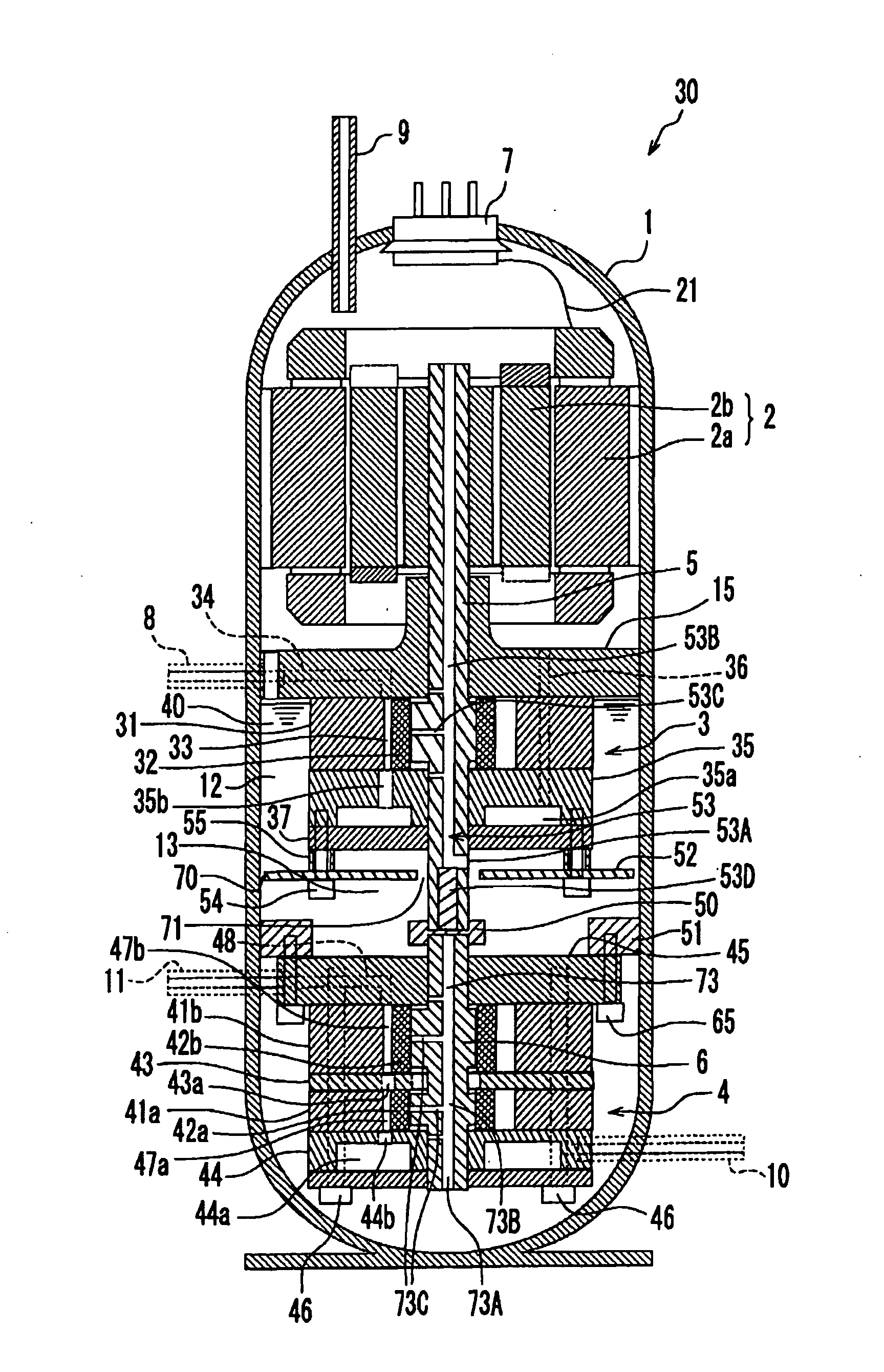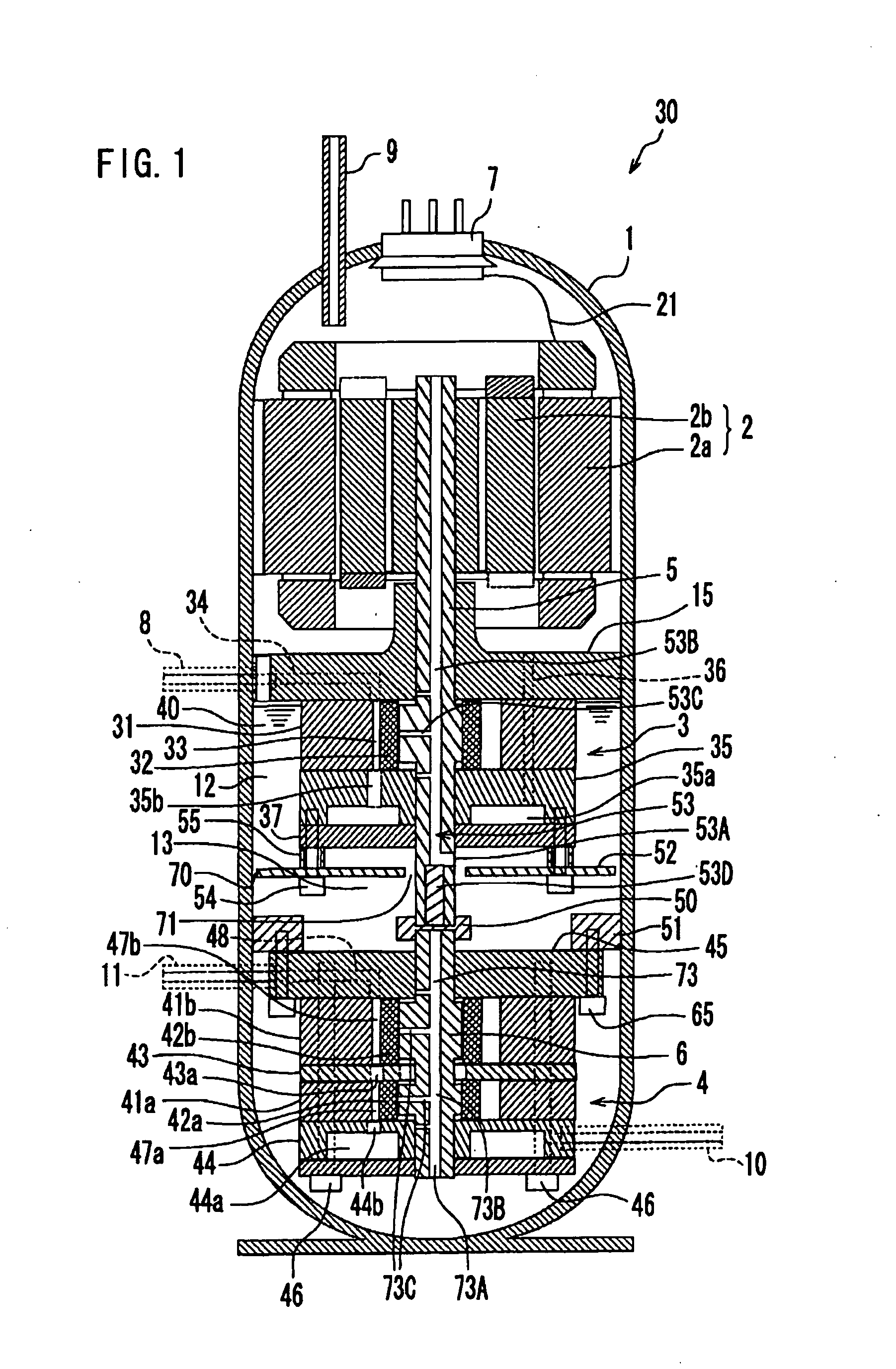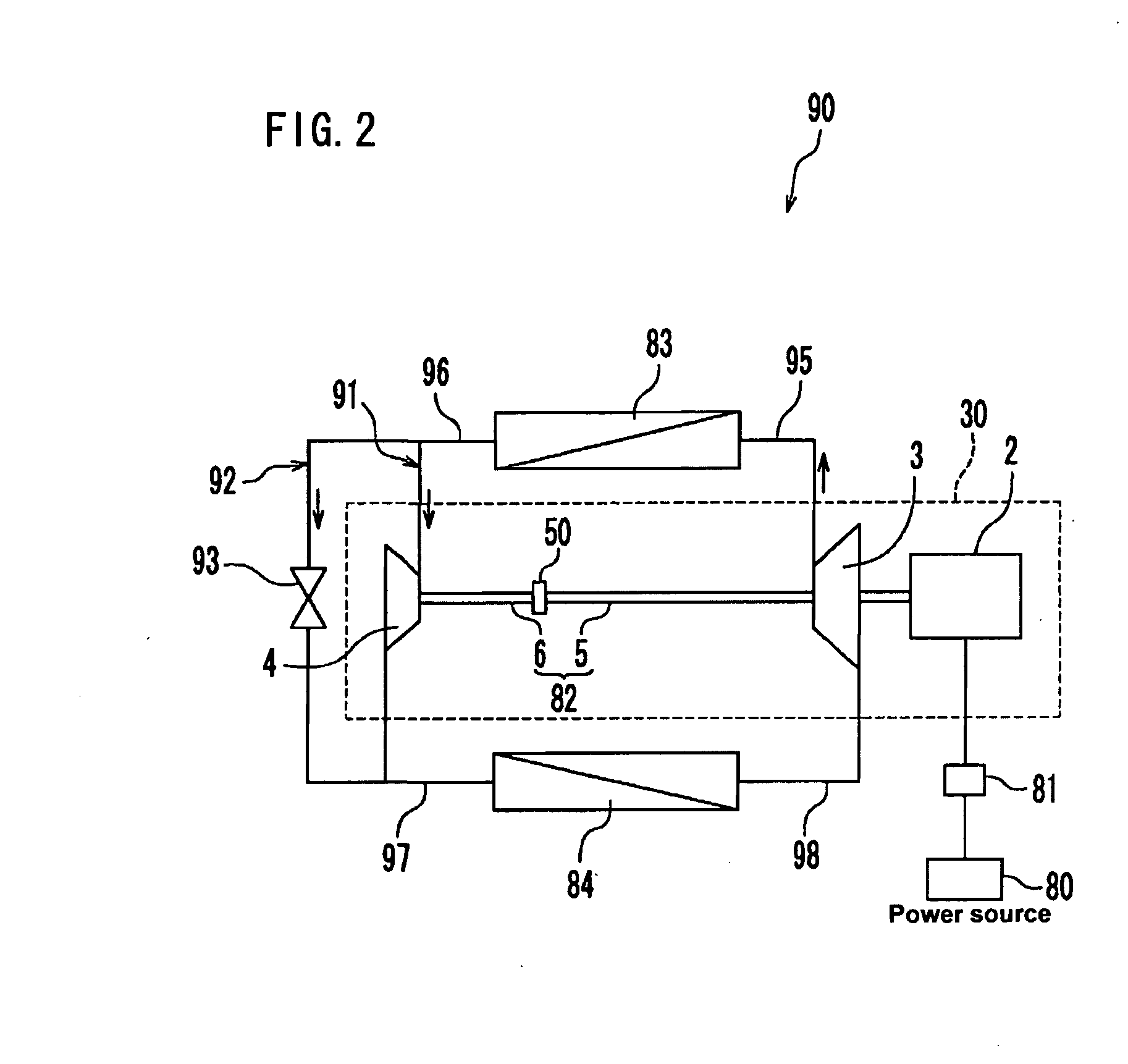Expander-compressor unit and refrigeration cycle apparatus having the same
a compressor unit and compressor technology, applied in the direction of positive displacement liquid engine, lighting and heating apparatus, piston pump, etc., can solve the problems of reducing increasing the power consumption of the motor, and deteriorating the capacity of the radiator and the evaporator, so as to reduce the heat transfer, improve the efficiency of the refrigeration cycle apparatus, and suppress the discharge
- Summary
- Abstract
- Description
- Claims
- Application Information
AI Technical Summary
Benefits of technology
Problems solved by technology
Method used
Image
Examples
embodiment 1
[0033]FIG. 1 is a vertical cross-sectional view of an expander-compressor unit 30 according to Embodiment 1 of the present invention. FIG. 2 shows a refrigeration cycle apparatus 90 having the expander-compressor unit 30.
[0034]As shown in FIG. 1, the expander-compressor unit 30 includes a motor 2 operating in response to electric power supply from a commercial power source 80 (see FIG. 2), a compression mechanism 3 for compressing a refrigerant, an expansion mechanism 4 for allowing the refrigerant to expand, and a closed casing 1 accommodating these elements 2, 3, and 4. The motor 2, the compression mechanism 3, and the expansion mechanism 4 are disposed in this order from top to bottom. An oil 40 for lubricating the sliding parts of the compression mechanism 3 and the expansion mechanism 4 is held at a bottom portion of the closed casing 1 (it should be noted that the “bottom portion” here means a lower side with respect to an arbitrary predetermined position, and does not necessa...
embodiment 2
[0067]FIG. 3 is a vertical cross-sectional view of the expander-compressor unit 30 according to Embodiment 2 of the present invention. As shown in FIG. 3, the expander-compressor unit 30 of the present embodiment has almost the same configuration as that of the expander-compressor unit described in Embodiment 1 (see FIG. 1). Hereinbelow, components having the same functions are indicated by the same reference numerals, and explanations thereof are omitted.
[0068]A difference between the present embodiment and Embodiment 1 is the shape of the flow suppressing plate 62. The flow suppressing plate 62 of the present embodiment is a cut-out plate of an approximately annular shape having cut-outs 62a in an outer peripheral portion thereof. The cut-outs 62a intermittently are formed along the outer periphery of the flow suppressing plate 62. The number of the cut-outs 62a is not particularly limited. The flow suppressing plate 62 of the present embodiment also has the hole 71 at its center ...
embodiment 3
[0072]FIG. 4 is a vertical cross-sectional view of the expander-compressor unit 30 according to Embodiment 3 of the present invention. As shown in FIG. 4, the expander-compressor unit 30 of the present embodiment has almost the same configuration as that of the expander-compressor unit described in Embodiment 2 (see FIG. 3). Hereinbelow, components having the same functions are indicated by the same reference numerals, and explanations thereof are omitted.
[0073]A difference between the present embodiment and Embodiment 2 is the configuration of the oil supply passage. An oil supply passage 63 of the present embodiment includes oil grooves 63B, 63C and 63D formed in the outer peripheral surface of the compression mechanism side shaft 5, and continuous passages (not shown) bringing them into communication with each other. The oil grooves 63B and 63D are formed in the outer peripheral surface of the compression mechanism side shaft 5, at a portion higher than an eccentric portion of th...
PUM
 Login to View More
Login to View More Abstract
Description
Claims
Application Information
 Login to View More
Login to View More - R&D
- Intellectual Property
- Life Sciences
- Materials
- Tech Scout
- Unparalleled Data Quality
- Higher Quality Content
- 60% Fewer Hallucinations
Browse by: Latest US Patents, China's latest patents, Technical Efficacy Thesaurus, Application Domain, Technology Topic, Popular Technical Reports.
© 2025 PatSnap. All rights reserved.Legal|Privacy policy|Modern Slavery Act Transparency Statement|Sitemap|About US| Contact US: help@patsnap.com



